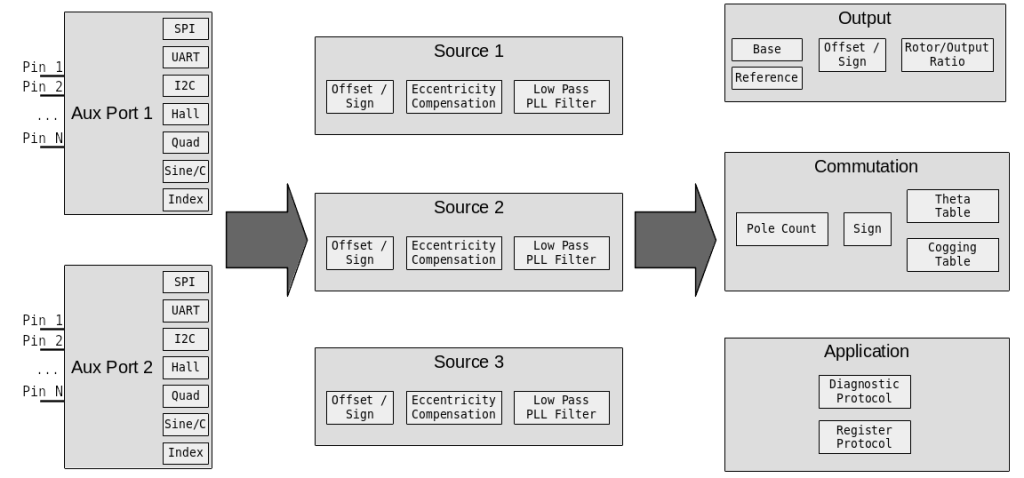Low cost off axis encoders for moteus - a beginning
The moteus line of brushless controllers all have an integrated “on-axis” magnetic encoder. These encoders are designed to allow moteus to sense the position of a motor’s shaft directly, assuming that an appropriate diametrically magnetized sense magnet is attached to the rotating shaft and the moteus is mounted so that its sensor is positioned over the magnet.
This works great for many applications, but what about hollow shaft motors? moteus supports a few encoder types that will work for off axis encoders, most notably is the AksIM-2. This is a high performance off-axis encoder that gives great performance and is manufactured in configurations for a variety of hollow shaft diameters. However, it does have downsides. First, it comes with a commensurate price tag. In single quantities, the AksIM-2 and magnetic code disc are more expensive than an entire moteus brushless motor controller. Second, only the moteus-n1 has the necessary RS422 transceiver integrated into it. All other moteus boards need an external RS422 transceiver.

